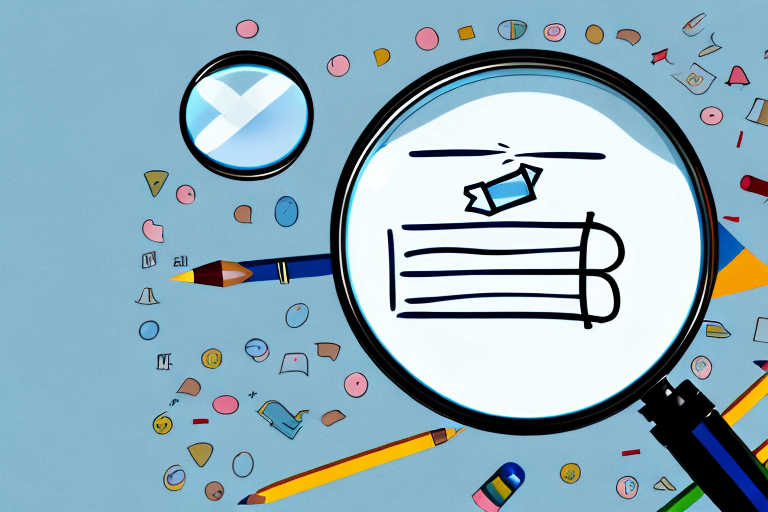Classroom walkthroughs have become a valuable tool for improving teaching and learning in schools. By observing teachers in action, administrators and instructional leaders can gain insights into instructional practices, identify areas for growth, and provide valuable feedback to support teachers in their professional development. In this article, we will explore the importance of classroom walkthroughs and discuss strategies for giving teachers positive and actionable feedback.## Understanding the Importance of Classroom Walkthroughs
Classroom walkthroughs serve as a means of fostering a culture of continuous improvement within schools. They provide administrators and instructional leaders with the opportunity to see firsthand the strategies and techniques being utilized by teachers, and offer feedback that is both constructive and supportive.
When conducting classroom walkthroughs, administrators and instructional leaders are able to gain valuable insights into the teaching practices and instructional strategies employed by teachers. By observing teachers in action, they can identify areas of strength and areas that may require improvement. This information is crucial for providing targeted support and professional development opportunities to teachers.
Furthermore, classroom walkthroughs allow for the collection of data on specific teaching practices or instructional strategies. This data can be analyzed to identify trends and patterns, which can then inform decision-making at the school or district level. For example, if a particular instructional strategy is found to be highly effective, it can be shared and implemented across classrooms to benefit a larger number of students.
Defining Classroom Walkthroughs
Classroom walkthroughs involve brief, focused observations of teachers in action. They typically last between 10 to 15 minutes and are conducted with the intention of gathering data on specific teaching practices or instructional strategies.
During a classroom walkthrough, administrators and instructional leaders may use various tools and protocols to guide their observations. These tools can help them focus on specific aspects of teaching, such as classroom management, student engagement, or the use of technology. By using standardized observation tools, the data collected during walkthroughs becomes more reliable and consistent.
It is important to note that classroom walkthroughs should not be seen as evaluative in nature. Instead, they should be viewed as opportunities for collaboration and growth. The goal is to provide teachers with feedback that will help them refine their instructional practices and ultimately improve student learning.
The Role of Classroom Walkthroughs in Education
Classroom walkthroughs play a pivotal role in improving instructional practices and student outcomes. By providing administrators and instructional leaders with a window into classrooms, they allow for targeted support and feedback to be delivered to teachers, ultimately enhancing the overall quality of education.
Through classroom walkthroughs, administrators and instructional leaders can identify effective teaching strategies and share them with other educators. This promotes a culture of collaboration and professional growth, as teachers can learn from one another and implement successful practices in their own classrooms.
Additionally, classroom walkthroughs provide an opportunity to address any challenges or concerns that teachers may have. By observing classrooms and engaging in conversations with teachers, administrators can gain a better understanding of the specific needs and circumstances of each teacher. This knowledge can inform decision-making and resource allocation, ensuring that teachers have the support and resources they need to be successful.
Furthermore, classroom walkthroughs can contribute to a positive and supportive school climate. When teachers know that their administrators are invested in their professional growth and development, they are more likely to feel valued and motivated. This, in turn, can lead to increased job satisfaction and ultimately benefit student learning.
The Art of Giving Positive Feedback
Positive feedback is a powerful tool for motivating and encouraging teachers. When delivered effectively, positive feedback can boost teachers’ confidence, reinforce their efforts, and inspire them to continue striving for excellence.
But what exactly is positive feedback and why is it so important in the field of education? Positive feedback refers to the act of recognizing and acknowledging a teacher’s strengths, accomplishments, and efforts. It is a way of showing appreciation and gratitude for their hard work and dedication.
Research has shown that positive feedback can have a significant impact on teachers’ job satisfaction and professional growth. It not only increases their sense of self-worth but also fosters a positive and supportive school culture. When teachers receive positive feedback, they feel valued and appreciated, which in turn motivates them to continue improving their teaching practices.
The Impact of Positive Feedback on Teachers
Positive feedback has the power to transform a teacher’s experience in the classroom. When teachers receive recognition for their efforts, it boosts their confidence and reaffirms their belief in their abilities. This, in turn, translates into increased job satisfaction and a greater sense of fulfillment in their profession.
Furthermore, positive feedback can also contribute to a teacher’s professional growth. By highlighting specific strengths and accomplishments, positive feedback provides teachers with valuable insights into their teaching practices. It helps them identify areas of strength that they can build upon and areas for improvement that they can focus on.
Additionally, positive feedback plays a crucial role in creating a positive and supportive school culture. When teachers feel appreciated and valued, they are more likely to collaborate with their colleagues, share their knowledge and expertise, and contribute to a positive and nurturing learning environment for their students.
Strategies for Delivering Positive Feedback
When providing positive feedback, it is important to be specific and genuine. Rather than simply saying, “Good job,” take the time to highlight specific strengths or accomplishments observed during the walkthrough. This will not only validate teachers’ efforts but also provide them with actionable information they can use to further enhance their instructional practices.
One effective strategy for delivering positive feedback is to use the “sandwich” approach. Start by acknowledging something positive, then provide constructive feedback, and end with another positive comment. This approach ensures that the feedback is balanced and encourages teachers to reflect on their practice while still feeling supported and appreciated.
Another strategy is to provide feedback in a timely manner. Teachers appreciate receiving feedback soon after they have implemented a new strategy or completed a project. This allows them to reflect on their practice while the experience is still fresh in their minds.
Lastly, it is important to create a safe and non-threatening environment for feedback. Teachers should feel comfortable receiving feedback and know that it is meant to support their growth and development. Encourage open and honest communication, and be receptive to any concerns or questions that teachers may have.
Making Feedback Actionable
While positive feedback is important, it is equally crucial to provide teachers with feedback that is actionable. Actionable feedback is constructive and specific, offering teachers clear guidance on how to improve their teaching practices.
The Characteristics of Actionable Feedback
Actionable feedback should be specific, timely, and relevant. It should address areas for improvement and suggest concrete strategies or resources that teachers can utilize to enhance their instructional practices.
Techniques for Providing Actionable Feedback
One effective technique for providing actionable feedback is the “sandwich approach.” This involves starting with positive feedback, then offering suggestions for improvement, and concluding with additional positive comments. By framing constructive feedback in a positive context, teachers are more likely to be receptive and motivated to make necessary changes.
The Process of Classroom Walkthroughs
The successful implementation of classroom walkthroughs relies on a structured and systematic approach. This ensures that walkthroughs are purposeful, meaningful, and consistent across all classrooms.
Preparing for a Classroom Walkthrough
Prior to conducting a walkthrough, administrators and instructional leaders should clearly define the purpose and focus of the observation. They should familiarize themselves with the instructional strategies being observed and prepare any necessary data collection tools or observation forms.
Conducting the Walkthrough
During the walkthrough, administrators and instructional leaders should observe the instructional practices being implemented by the teacher. They should take notes, gather data, and look for evidence of effective instructional strategies.
Post-Walkthrough Feedback Session
After the walkthrough, administrators and instructional leaders should schedule a feedback session with the teacher. This provides an opportunity for a collaborative conversation where feedback is shared, strengths are recognized, and areas for growth are discussed. It is important to approach these sessions with a coaching mindset, aiming to support and empower teachers to make meaningful improvements in their practice.
Overcoming Challenges in Classroom Walkthrough Feedback
While the benefits of classroom walkthroughs and feedback are well-documented, challenges can arise when it comes to effectively communicating and implementing feedback.
Common Obstacles in Providing Feedback
One common challenge is resistance from teachers. Some teachers may view feedback as criticism rather than an opportunity for growth. Additionally, time constraints and competing priorities can make it difficult for administrators and instructional leaders to provide timely and meaningful feedback.
Solutions for Effective Feedback Communication
To address these challenges, it is important to create a supportive and collaborative culture within the school. This can be achieved through ongoing professional development, mentorship programs, and the establishment of a safe space for teachers to reflect on their practice. Additionally, providing dedicated time for feedback conversations and utilizing technology platforms can help streamline the feedback process.
In conclusion, classroom walkthroughs can be powerful tools for improving instructional practices and supporting teachers’ professional growth. By providing positive and actionable feedback, administrators and instructional leaders can empower teachers to enhance their instructional practices and ultimately enhance the learning experiences of their students.






